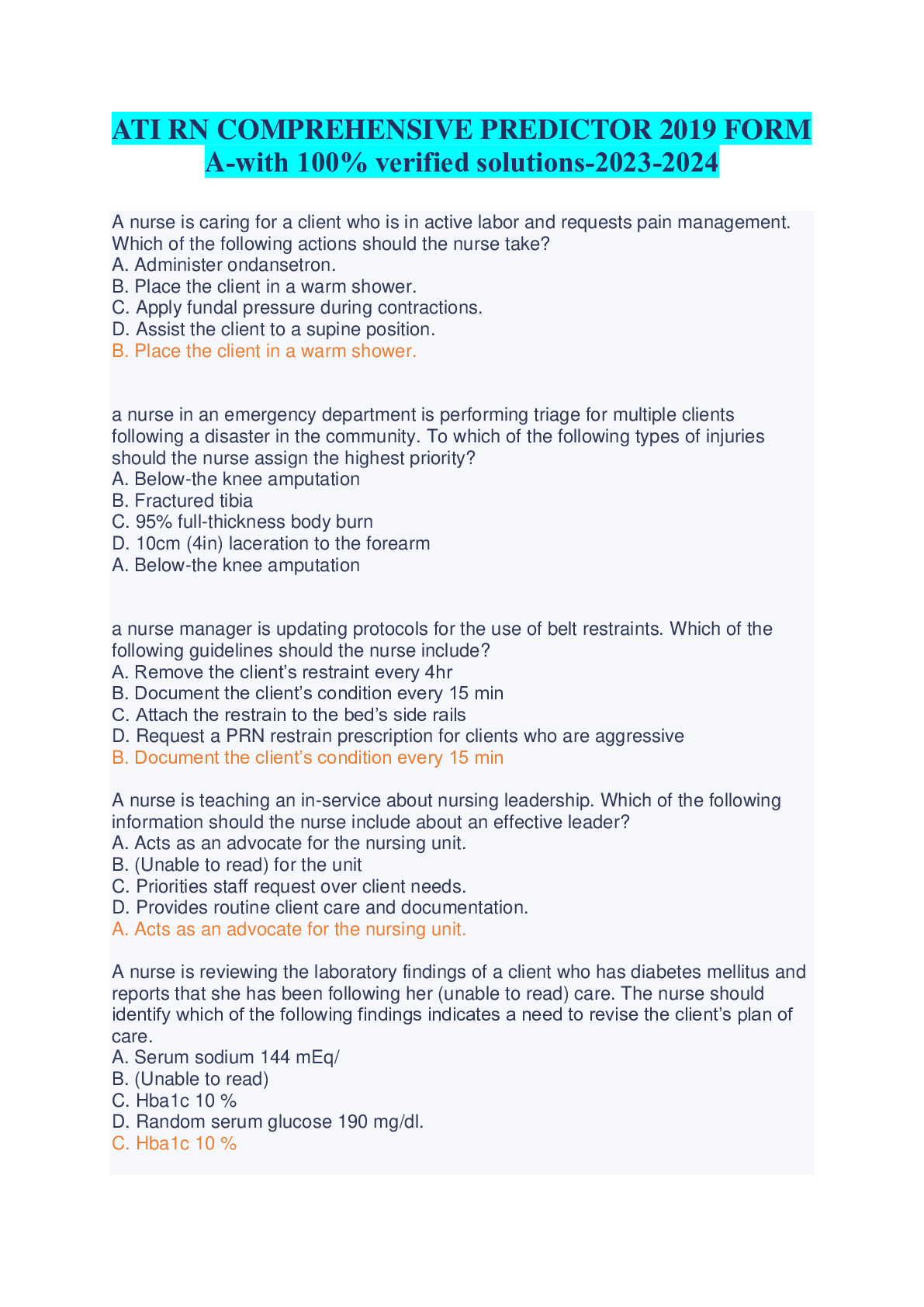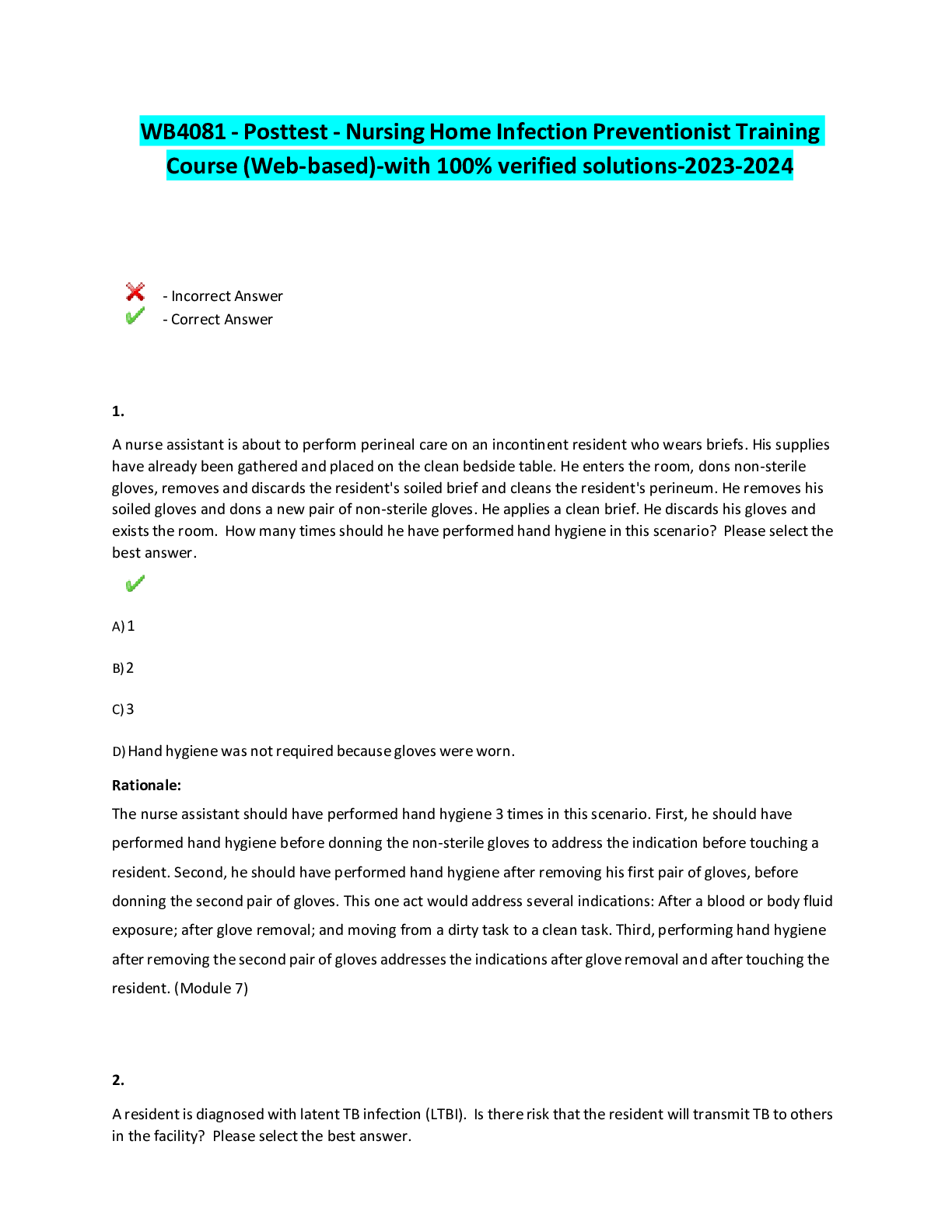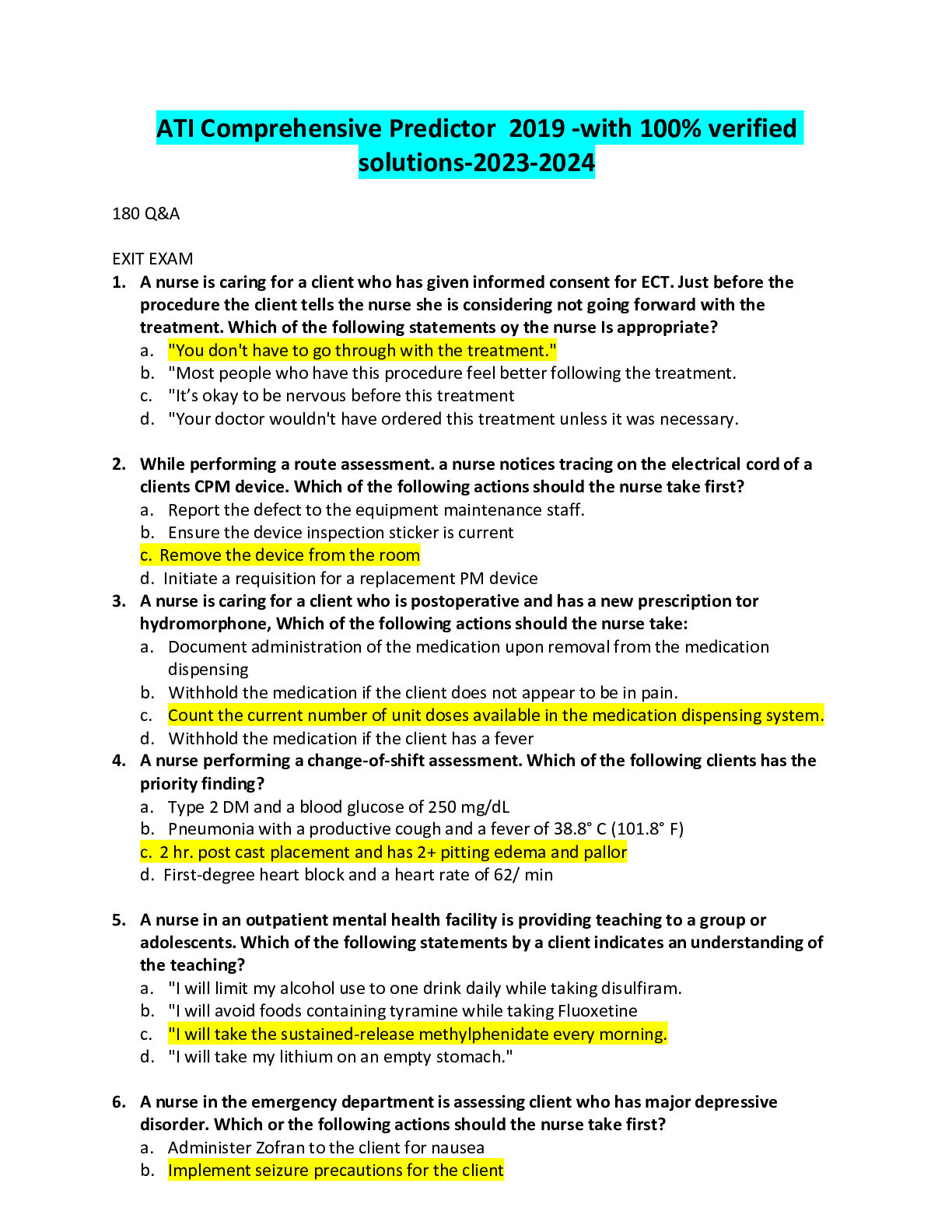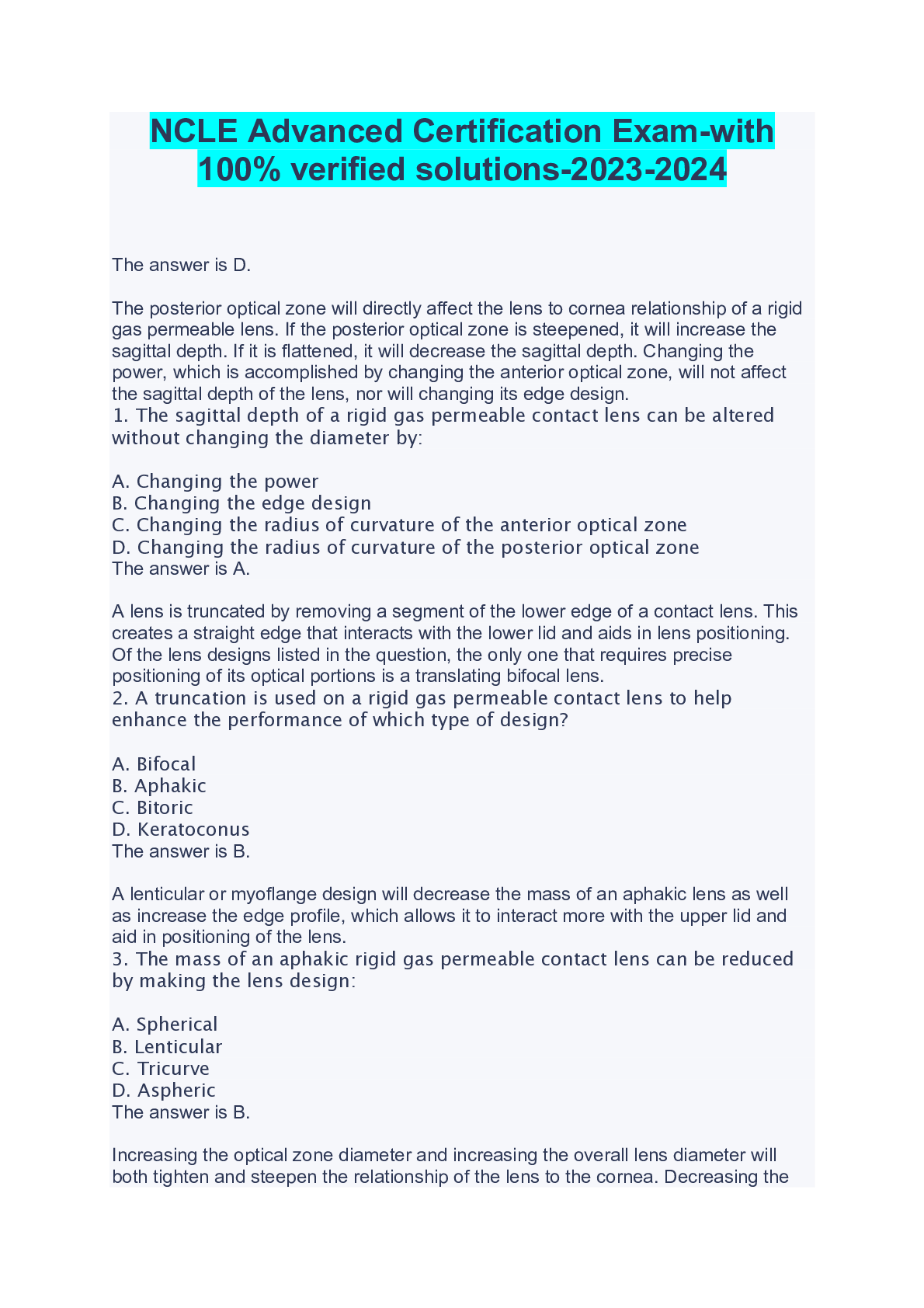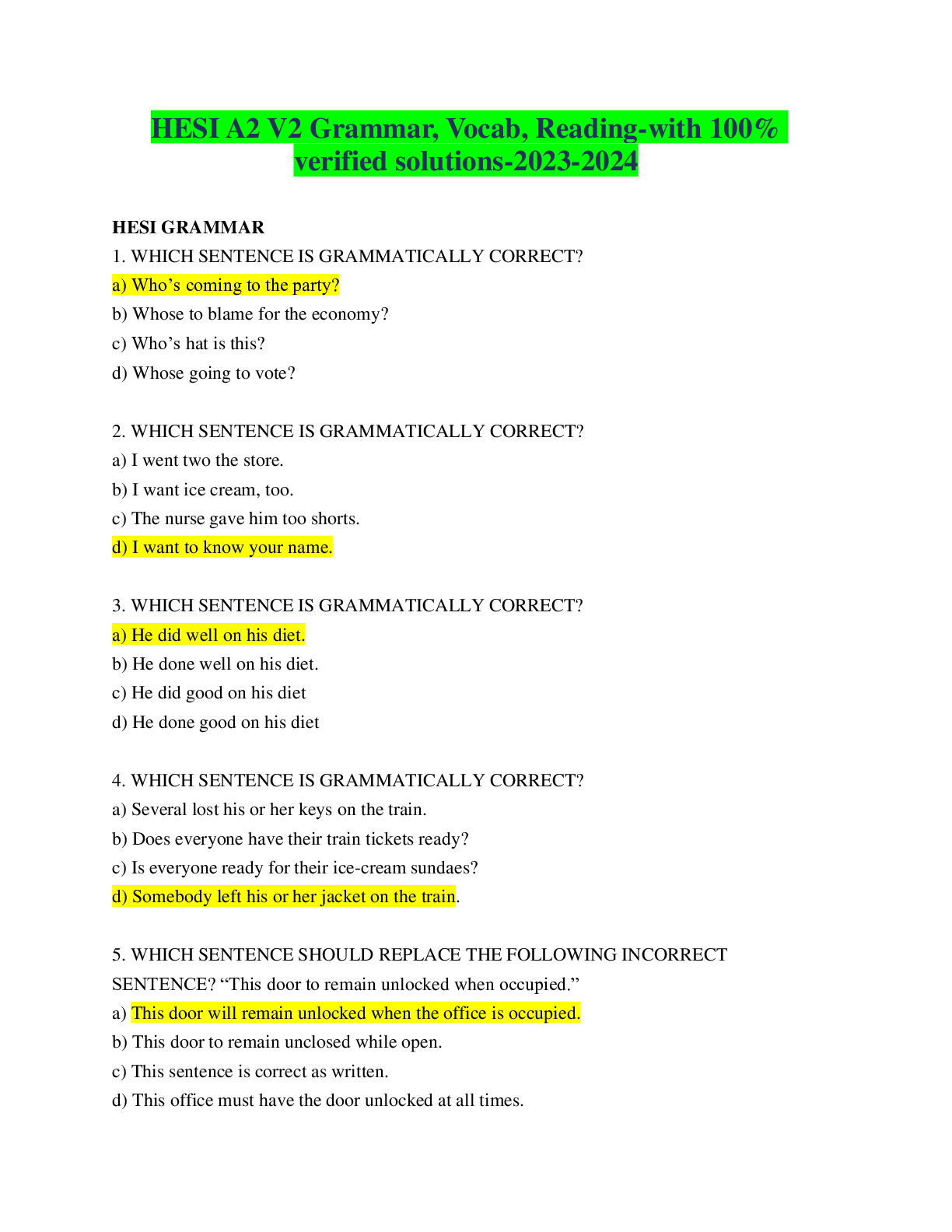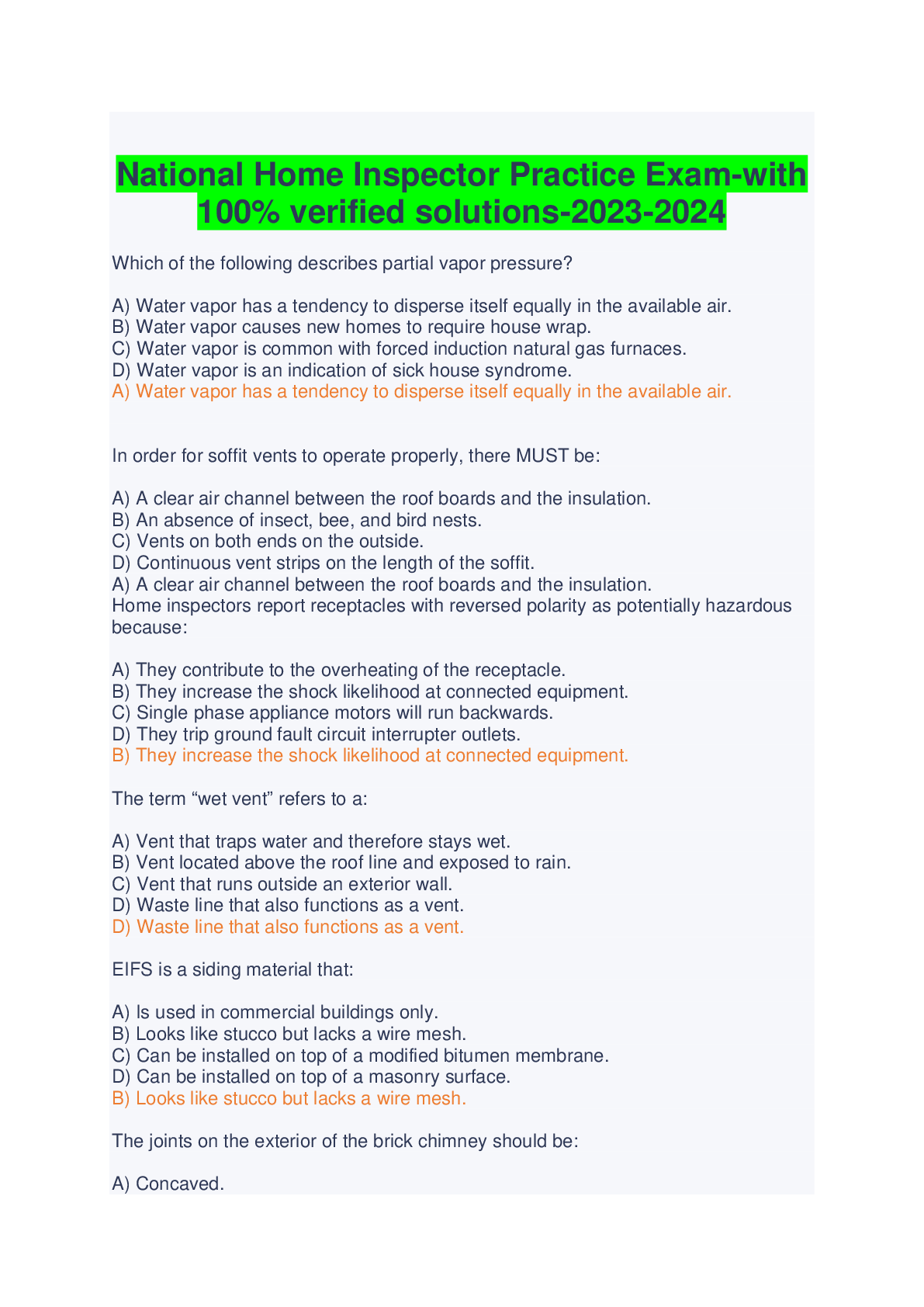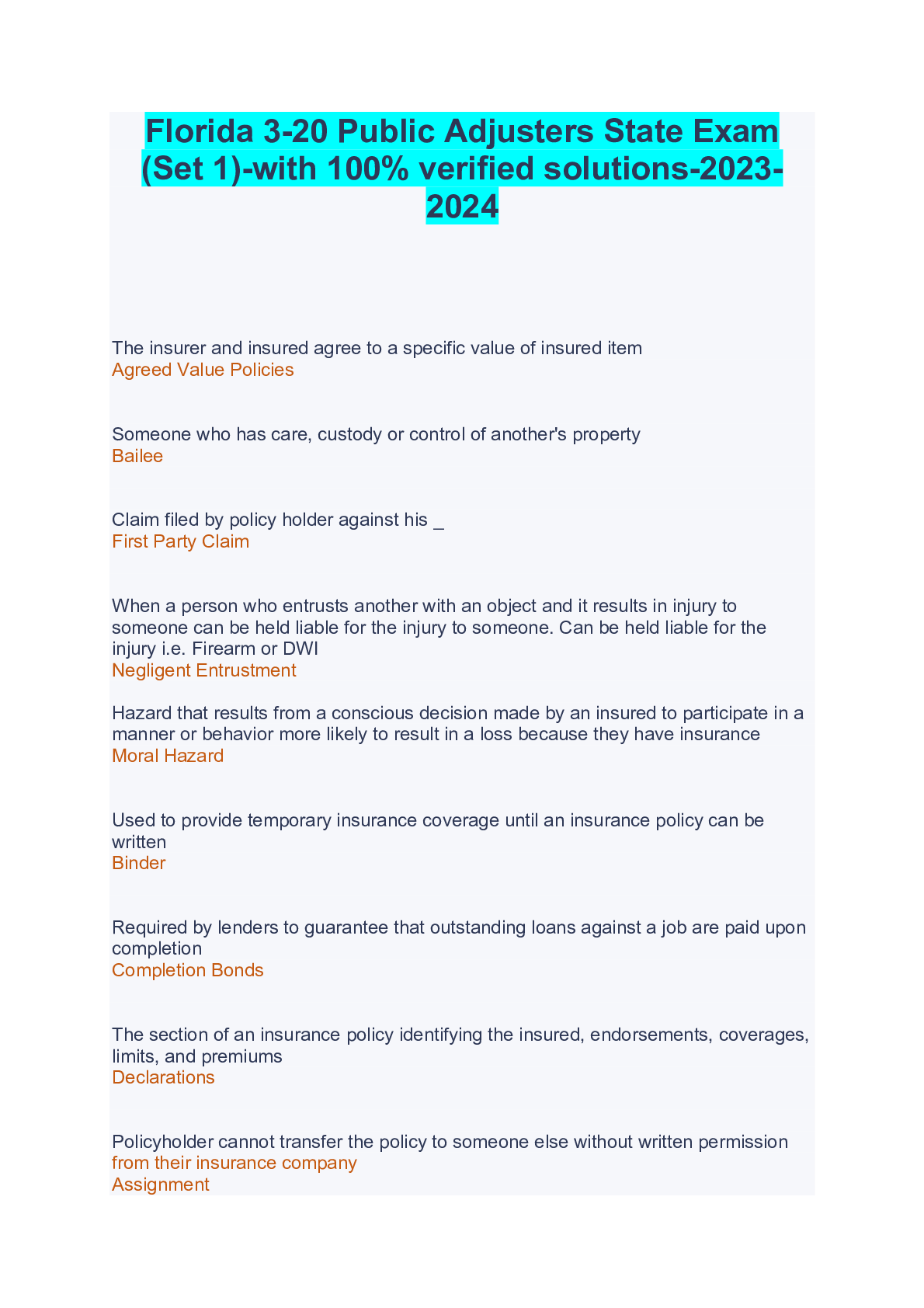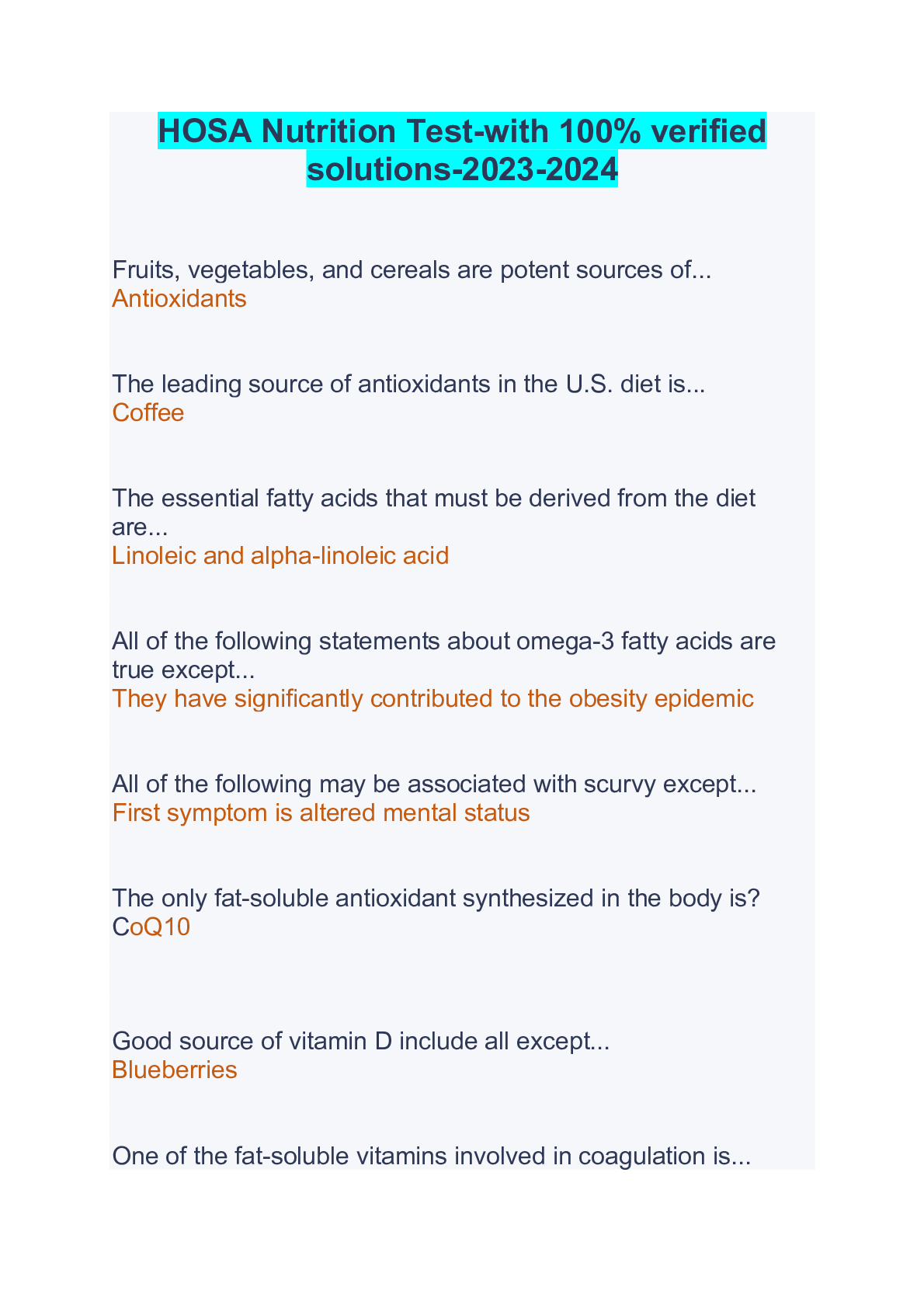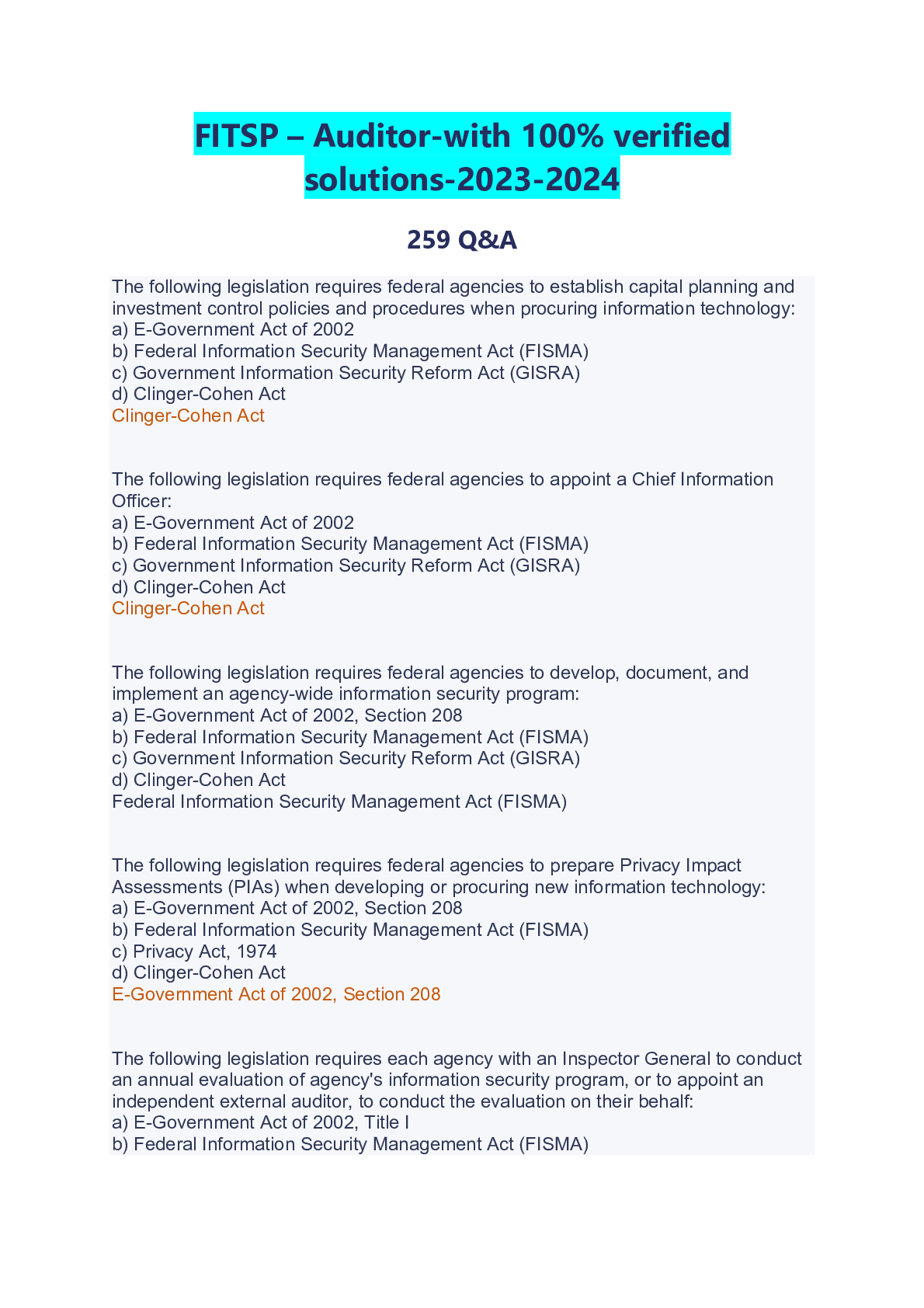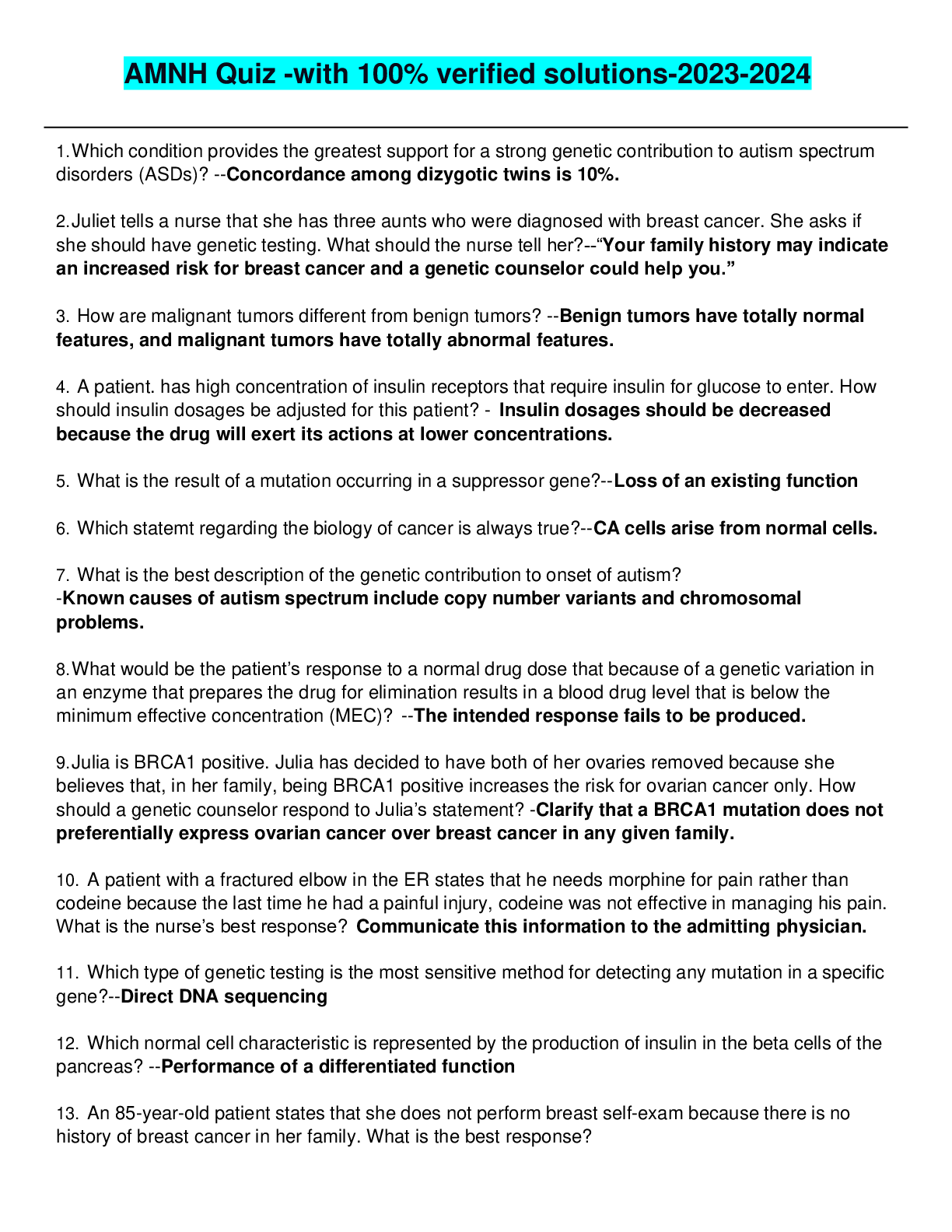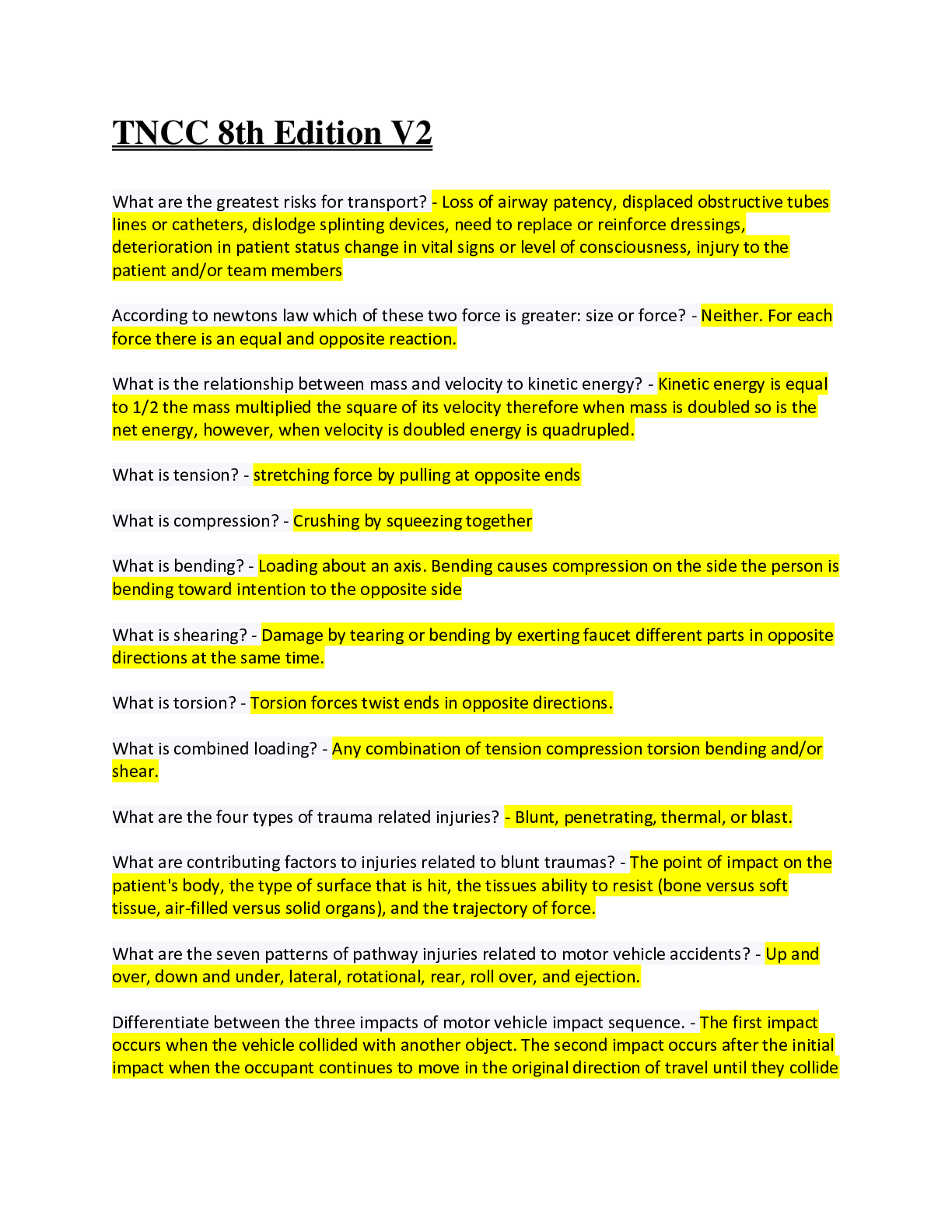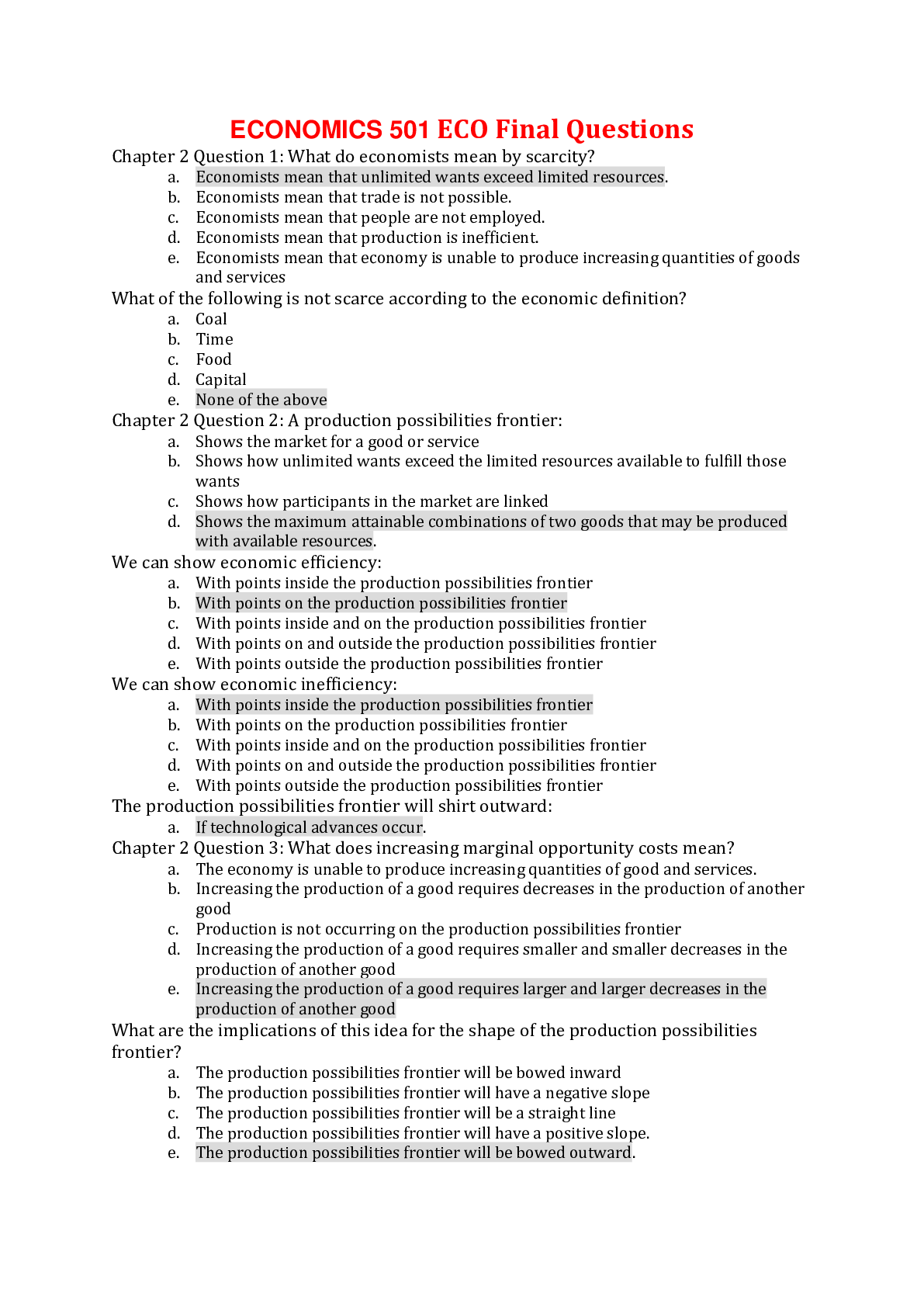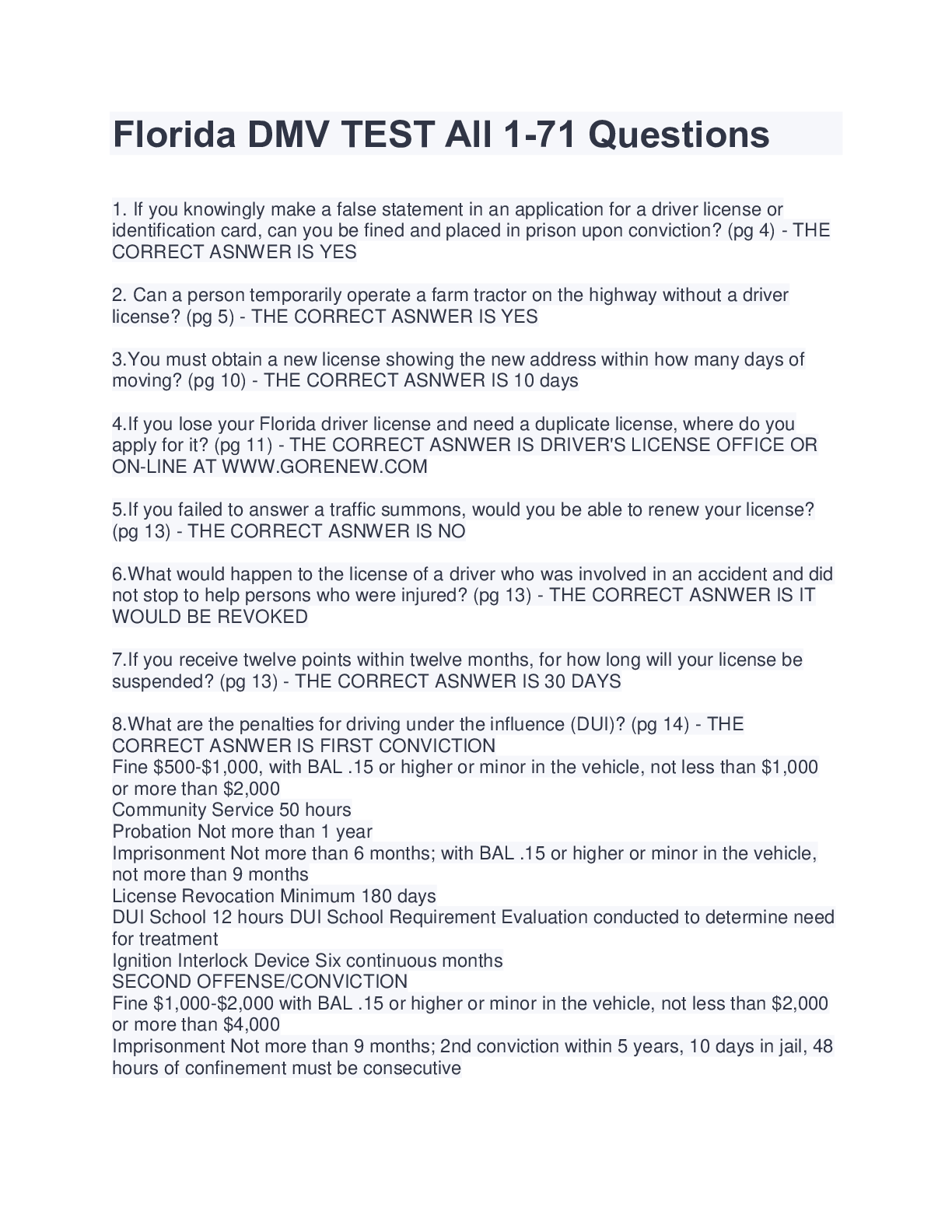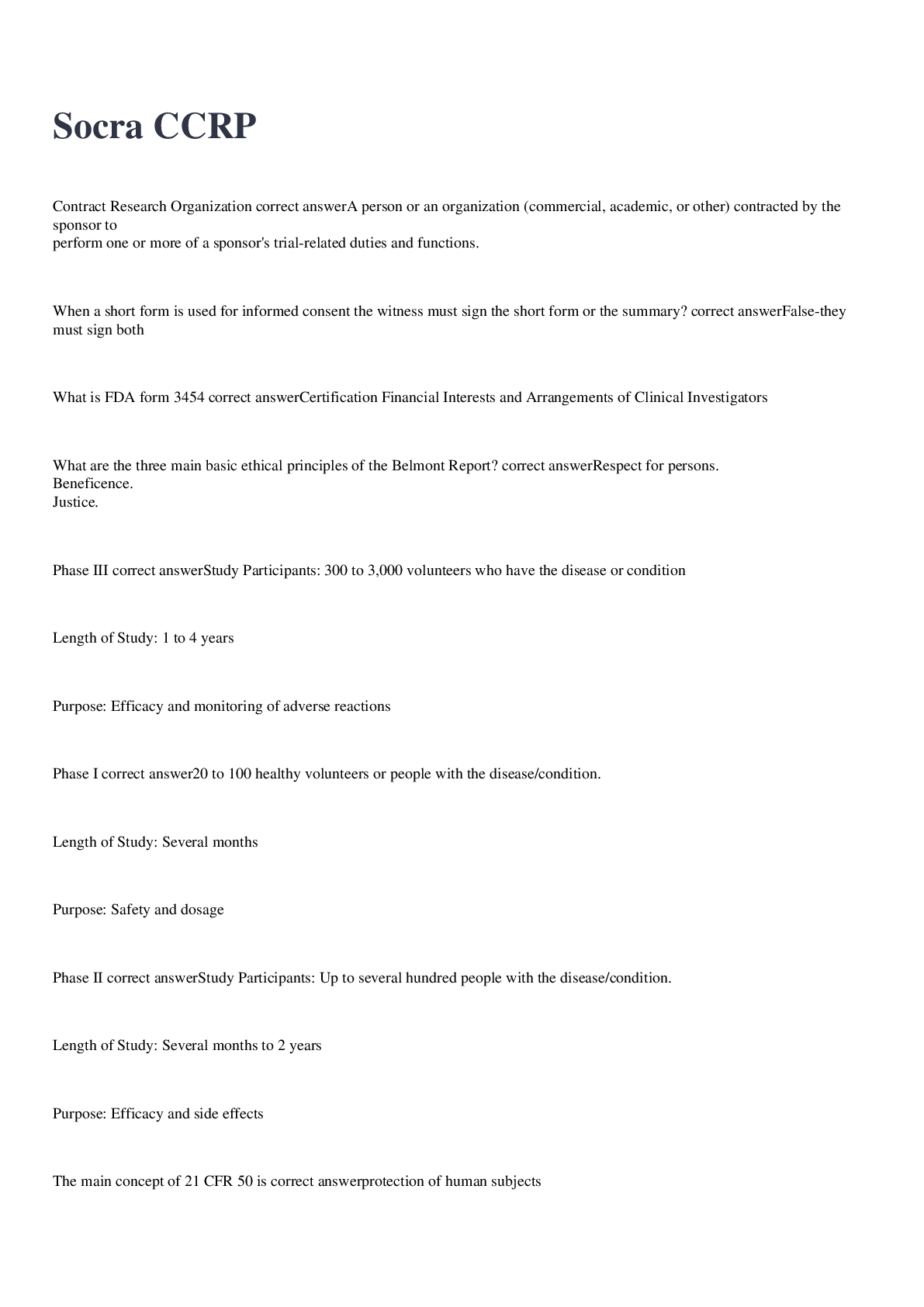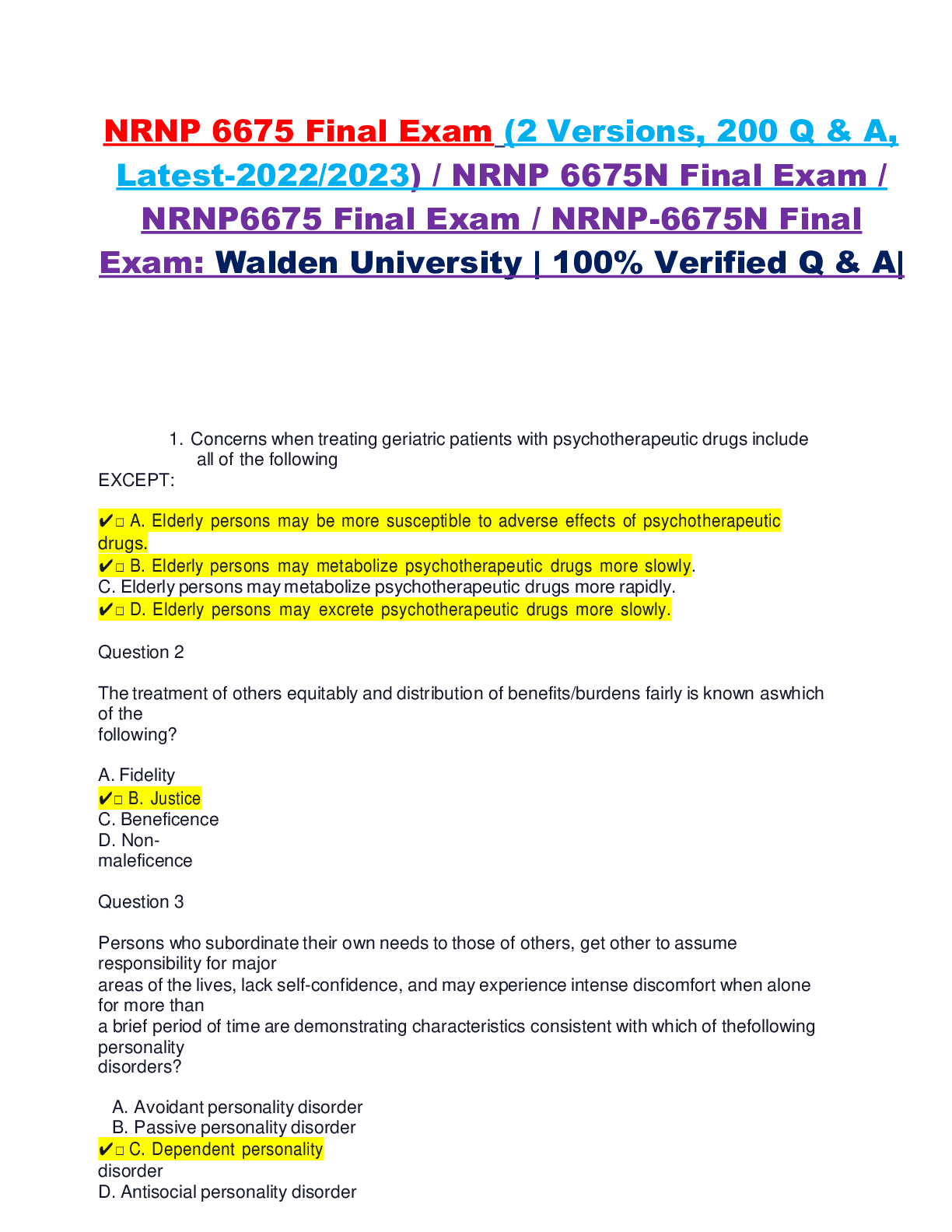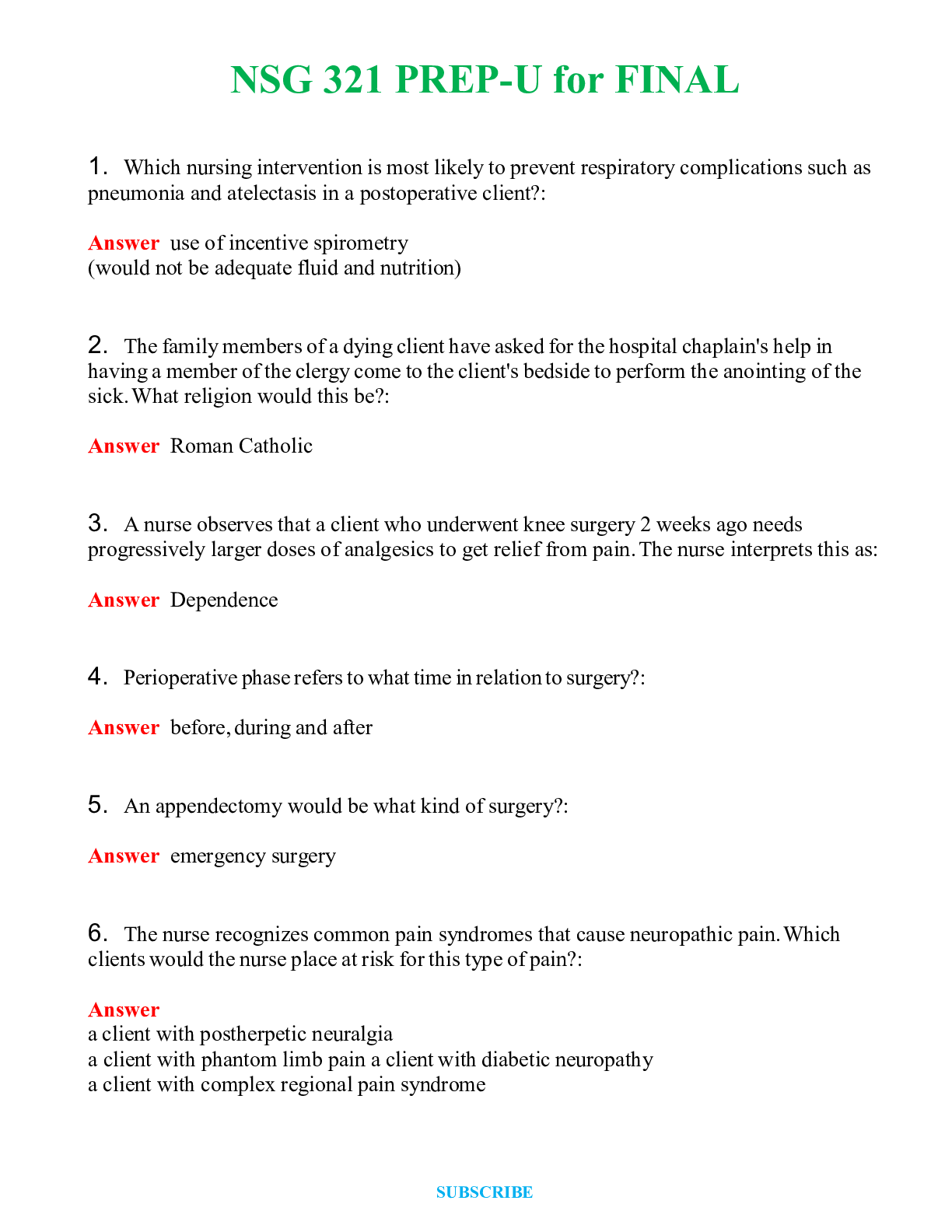ATI Comprehensive predictor retake 2021 -verified
Document Content and Description Below
1. A nurse is assessing a client who has received an antibiotic. The nurse should identify which of the following findings as an indication of a possible allergic reaction to the medication? A. Brady... cardia B. Headache C. Joint pain D. Hypotension 2. A nurse on a mental health unit is caring for a client who has schizophrenia and is experiencing auditory hallucinations telling them to hurt others. The client is refusing to take anti-psychotic medication. Which of the following responses should the nurse make? A. “You should plan to take this medication for a few weeks.” B. “You will regret it if you do not take this medication.” C. “This medication will help you respond to the voices. D. “This medication will help you stop the voices you are hearing.” 3. A nurse is providing care for a patient who has depression and is to have electroconvulsive therapy. Which of the following conditions should the nurse identify as increasing the client’s risk for complications? A. Hyperthyroidism B. Renal calculi C. Diabetes mellitus D. Cardiac dysrhythmias 4. A nurse is reviewing the laboratory results of a client who has rheumatoid arthritis. Which of the following findings should the nurse report to the provider? A. WBC count 8,000/mm B. Platelets 150,000/mm C. Aspartate aminotransferase 10 units/L D. Erythrocyte sedimentation 75 mm/hr 5. A nurse is suctioning the airway of a client who is receiving mechanical ventilation via an endotracheal tube. Which of the following findings should the nurse identify as an indication that suctioning has been effective? A. Presence of a productive cough B. Decreased peak inspiratory pressure C. Thinning of mucous secretions D. Flattening of the artificial airway cuff 6. A nurse is caring for a client who is in a seclusion room following violent behavior. The client continues to display aggressive behavior. Which of the following actions should the nurse take? A. Stand within 30cm (1 ft) of the client when speaking with them. B. Express sympathy for the client’s situation. C. Confront the client about his behavior. D. Speak assertively to the client. 7. A nurse is caring for a client who is immediately postoperative following an adrenalectomy to treat Cushing’s disease. Which of the following actions is the nurse’s priority? A. Reposition the client for comfort every 2 hours B. Observe for any indications of infection C. Document amount and color of the incisional drainage. D. Monitor the client’s fluid and electrolyte status. 8. A nurse is caring for a client who is scheduled for a surgical procedure and states, “I don’t want to have this surgery anymore.” Which of the following responses should the nurse make? A. “We can manage your care following the procedure without complications.” B. “You have the right to refuse the procedure.” C. “Your doctor thinks the surgery is necessary.” D. “Let me review the procedure so you can understand what is going to happen.” 9. A nurse is evaluating a client who has borderline personality disorder. Which of the following behaviors indicates an improvement in the client’s condition? A. Impulsive behaviors B. Decreased clinging behavior C. Liability of mood D. Dependent behavior 10. A nurse is teaching a group of school-age children about healthy snack options. Which of the following snacks should the nurse include? A. Air-popped popcorn B. Milkshake made with whole milk. C. Baked potato chips D. Cheesecake 11. A nurse is providing teaching to a client who has a new prescription for enoxaparin. Which of the following medications for pain relief should the nurse include in the teaching that can be taken concurrently with enoxaparin? A. Naproxen sodium B. Ibuprofen C. Acetaminophen D. Aspirin 12. A nurse is caring for a client who has fibromyalgia and requests pain medication. Which of the following medications should the nurse plan to administer? A. Colchicine B. Lorazepam C. Pregabalin D. Codeine 13. A nurse is caring for a client who has congestive heart failure and is receiving furosemide and digoxin. Which of the following laboratory values indicates that the client is at risk for developing digoxin toxicity? A. Glucose 150 mg/dL B. Magnesium 1.3 mEq/L C. Potassium 3.1 mEq/L D. Sodium 134 mEq/L 14. A nurse is caring for a client who had an embolic stroke and has a prescription for alteplase. Which of the following in the client’s history should the nurse identify as a contraindication for receiving alteplase? A. Hip arthroplasty 1 week ago correct B. Obstructive lungs disease C. Retinal detachment D. Acute kidney failure 6 months ago 15. A nurse is providing discharge teaching for a client who has a new implantable cardioverter defibrillator (ICD). Which of the following client statements demonstrates understanding of the teaching? A. “I will soak in the tub rather than showering.” B. “I can hold my cellphone on the same side of my body as the ICD.” C. “I will wear loose clothing over my ICD.” D. “I will avoid using my microwave oven at home because of my ICD.” 16. A nurse is assessing a client who is postoperative following abdominal surgery and has an indwelling urinary catheter that is draining dark yellow urine at 25ml/hr. Which of the following interventions should the nurse anticipate? A. Clamp the catheter tubing for 30 min B. Initiate continuous bladder irrigation C. Obtain a urine specimen for culture and sensitivity D. Administer a fluid bolus 17. A nurse is caring for a client who has experienced a stillbirth. Which of the following actions should the nurse take during the initial grieving process? A. Avoid talking to the client about the newborn B. Discourage the client from allowing friends to see the newborn C. Offer to take pictures of the newborn for the client D. Assure the client that she can have additional children 18. A nurse is caring for a client who has a major burn injury. Which of the following actions is the nurse’s priority to prevent wound infection? A. Use sterile dressings for wound care B. Apply topical antibiotics to the client’s wounds. C. Place the client in protective isolation. D. Maintain consistent hand washing by staff. 19. A nurse is speaking with the caregiver of a client who has Alzheimer’s disease. The caregiver states, “Providing constant care is very stressful and is affecting all areas of my life.” Which of the following actions should the nurse take? A. Discuss methods of how to communicate with the client about problem solving behaviors. B. Suggest that the caregiver seek a prescription for an antipsychotic medication for the client. C. Assist the caregiver to arrange a daycare program for the client. D. Recommend allowing the client to have time alone in their room throughout the day. 20. A nurse is caring for a client who is 1 hr postpartum and unable to urinate. Which of the following actions should the nurse take? A. Administer a benzodiazepine B. Perform a fundal massage C. Place an ice pack on the client’s perineum D. Place the client’s hand in warm water 21. A nurse on a medical-surgical unit is performing medication reconciliation for a newly admitted client. Which of the following actions should the nurse take? A. Compare a list of common medications to treat a condition to the actual prescriptions B. Compare the prescription to the allergy history of the client C. Compare the medication label to the provider’s prescription on three occasions before administration D. Compare the client’s list of home medications to the admission prescriptions written for the client. 22. A nurse is preparing to administer betamethasone to a client who is 25 weeks of gestation and has preterm labor. Which of the following findings should the nurse identify as an adverse effect of this medication? A. Hyperglycemia B. Uterine contractions C. Proteinuria D. Hypotension 23. A nurse is preparing to obtain a blood sample from a client who has a central venous catheter. Which of the following actions should the nurse take? (SATA) B. Access the catheter using a large bore needle. E. Apply force when resistance is met while flushing the catheter. 24. A nurse is preparing to perform a dressing change on a preschooler. Which of the following actions should the nurse take to prepare the child for the procedure? A. Explain in simple terms how the procedure will affect the child. B. Ask the parents to wait outside the room during the procedure. C. Limit teaching sessions about the procedure to 20 min. D. Instruct the child in deep-breathing methods prior to the procedure. 25. A nurse is performing wound care for a client who has an abdominal incision. Which of the following techniques should the nurse implement? A. Irrigate the wound using a 10-mL syringe. B. Cleanse the wound starting at the bottom and moving upward. C. Cleanse the insertion site of the drain using a circular motion towards the center. D. Irrigate the wound with a low-pressure flow of solution. 26. A nurse on an antepartum unit is prioritizing care for multiple clients. Which of the following clients should the nurse see first? A. A client who is at 36 weeks of gestation and has a biophysical profile score of 8. B. A client who has preeclampsia and reports a persistent headache. C. A client who has pregestational diabetes mellitus and an HbA1c of 6.2%. D. A client who is at 28 weeks of gestation and reports leukorrhea. 27. A nurse is caring for a client who is recovering from an amputation of her right arm above the elbow. Which of the following information should the nurse report the occupational therapist? A. The client’s parent is in a skilled nursing facility. B. The client has two small children at home. C. The client is allergic to penicillin. D. The client lives in a two-story home. 28. A nurse is caring for a client who has major depressive disorder. The client tells the nurse, “No one cares about me. I’m completely alone.” Which of the following responses should the nurse make? A. “You should join a community support group.” B. “What makes you think that?” C. “Don’t worry. You should be feeling better in a couple weeks.” D. “Can you give me an example of how others are making you feel this way?” 29. A nurse is caring for a client who has sustained a severe head trauma and has significant bleeding from the nose. Which of the following actions should the nurse take first? A. Prepare for a CT scan. B. Insert a peripheral IV line. C. Establish a patent airway. D. Apply direct pressure to the nose. 30. A nurse is reviewing the rhythm strip of a client who is experiencing sinus arrhythmia. Which of the following findings should the nurse expect? A. Inconsistent P wave formation. B. Ventricular and atrial rates 120/min C. P-R intervals of 0.30 seconds D. P to QRS ratio 1:1 page 720 Med surg book 31. A nurse is admitting a client who has dementia to a long-term care facility. The client tells the nurse that she lived in this facility years ago and took care of all the residents by herself. The nurse should document this as which of the following findings? A. Confabulation B. Agnosia C. Projection D. Perseveration 32. A nurse is reviewing home recommendations with a client who is postoperative following knee surgery. Which of the following recommendations should the nurse make? A. Place a handrail in the entryway of the house. B. Place a towel on the floor outside of the shower. C. Ensure that all area rugs are rubber-backed. D. Wear slippers with cloth soles. 33. A nurse is caring for a client who is postoperative following total hip arthroplasty. Which of the following actions should the nurse take to prevent dislocation of the prosthesis? A. Raise the head of the client’s bed to a high-fowler’s position. B. Elevate the client’s effected leg on a pillow when in bed. C. Position the client’s knees slightly higher than the hips when up in a chair. D. Keep an abduction pillow between the client’s legs. 34. A nurse in a pediatric clinic is teaching a newly hired nurse about the varicella zoster virus. Which of the following information should the nurse include? A. Children who have varicella should be placed on droplet precautions. B. Children who have varicella are contagious 4 days before the first vesicle eruption. C. Children who have varicella are contagious until the vesicles are crusted. D. Children who have varicella should receive the herpes zoster vaccine. 35. A nurse is caring for a client who is experiencing a panic attack. Which of the following actions should the nurse take? A. Teach the client how to meditate B. Sit with the client to provide a sense of security. C. Encourage the client to watch television. D. Administer a dose of atomoxetine to decrease anxiety. CONTINUED........ [Show More]
Last updated: 1 year ago
Preview 1 out of 36 pages
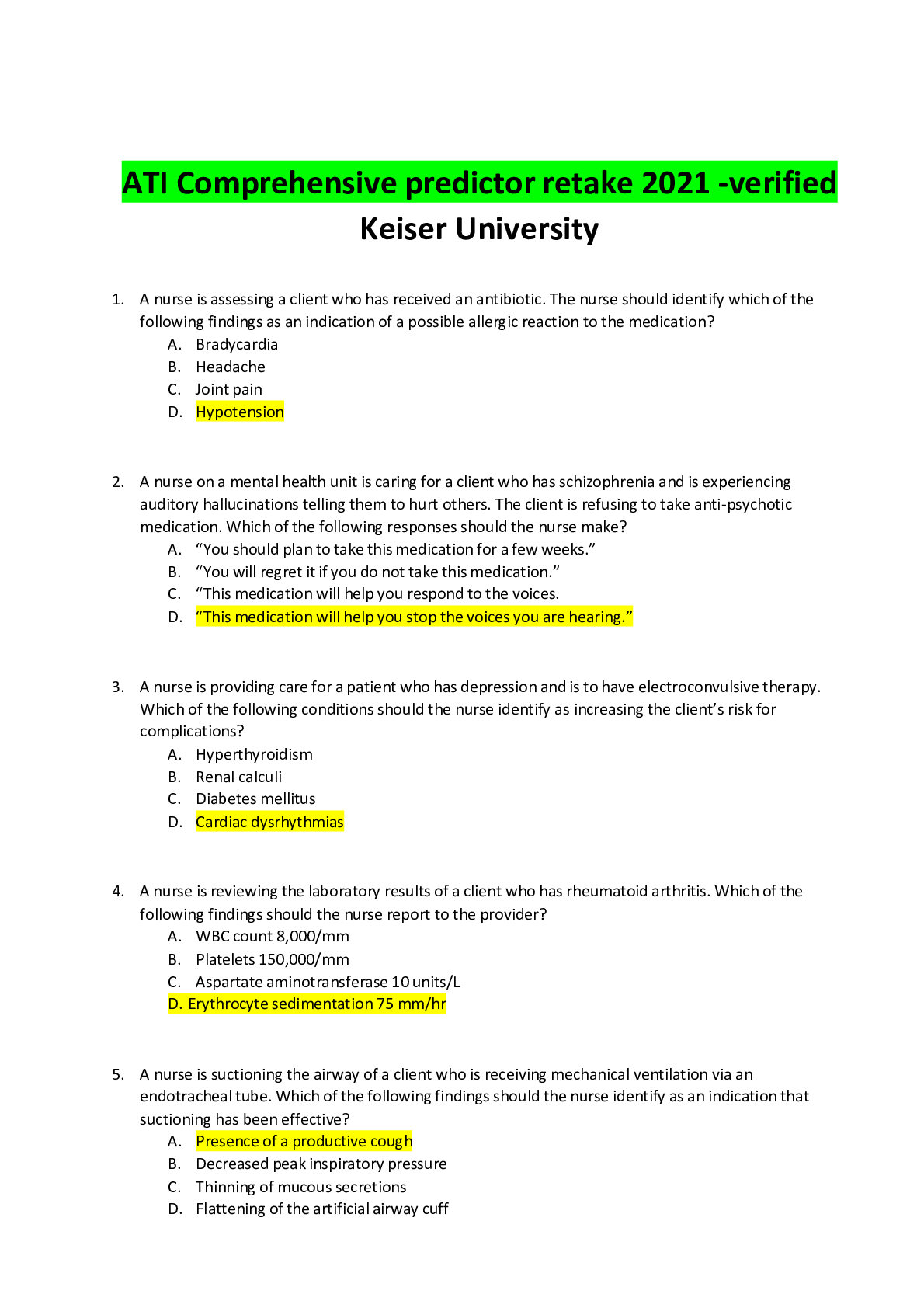
Reviews( 0 )
Document information
Connected school, study & course
About the document
Uploaded On
Apr 03, 2022
Number of pages
36
Written in
Additional information
This document has been written for:
Uploaded
Apr 03, 2022
Downloads
0
Views
69



